

With many high-protein foods suddenly off-limits, some people living with alpha-gal syndrome struggle to get enough high-quality protein in their daily diets. Enter quinoa. This ancient grain is a complete protein that’s safe for alpha gals.
The information provided on this site is based on my personal experience living with alpha-gal syndrome. I consistently cite and link to expert sources, but nothing published on this site should be perceived as medical advice.
Alpha-gal sensitivities vary by person. You should understand your dietary restrictions, making any adjustments needed, and directing any questions to your physician.
Packed with protein and high in fiber, quinoa is a seed that is cooked and eaten like rice and related grains. Here’s everything you need to know about this superfood.

To help offset the costs of running SageAlphaGal.com, you’ll find affiliate links lightly sprinkled throughout the site. If you choose to make a purchase via one of these links, there’s no additional cost to you, but I’ll earn a teeny tiny commission. You can read all of the legal blah blah blah (as my little niece says) on the full disclosure page.
In This Article
How to Pronounce Quinoa
A six-letter word that is 67% vowels and starts with a “q” can be understandably confusing to pronounce. In English, “qu” usually has a “kwa” sound, as in queen, quick, and question. But in Spanish, “qu” has a “kee” sound, like the word key.
To pronounce quinoa like a pro, start by saying “keen” and then add a “wah” sound similar to the “wa” in “want.” The emphasis in quinoa is on the first syllable, so be sure to pronounce that slightly louder than the rest of the word. When you put these pieces together, “quinoa” is pronounced as “KEEN-wah.”
Want Alpha-Gal Safe Recipes and More?
Sign up for the weekly newsletter!
Thank You for Subscribing!
What is Quinoa?
Although it’s technically a seed, quinoa is considered a pseudocereal. That means that quinoa is not a true cereal grain – like wheat or rice – but it is cooked and eaten in a similar way. Native to the Andes Mountains in South America, quinoa is often called a superfood because it is a complete protein, which means that it contains all nine essential amino acids that the human body cannot make on its own.
Quinoa is also considered a good source of fiber (which helps you feel full longer), antioxidants (which help fight heart disease and cancer), and important minerals (like iron, zinc, manganese, and magnesium).
There are seven types of quinoa:
Quinoa can be used as a substitute for rice and other grains in a variety of dishes, such as pilafs, salads, and soups. It can also be ground into flour. Quinoa flakes make a protein-rich, gluten-free substitute for breadcrumbs, and quinoa puffs can replace puffed rice.
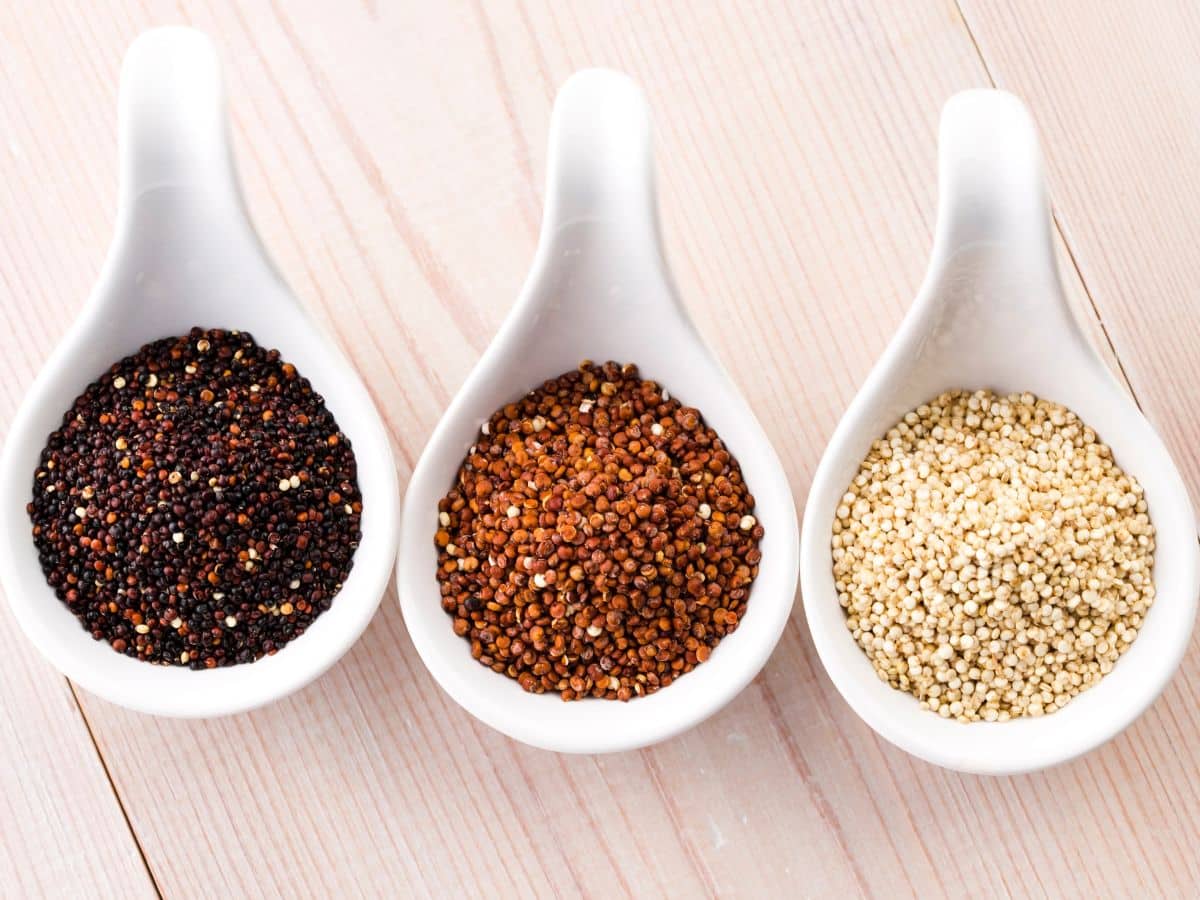
Where is Quinoa From?
First grown nearly 7,000 years ago in the Andes Mountains, the Incas called quinoa “the mother grain,” and it played an important role in their culture and mythology. Quinoa is considered an ancient grain. As opposed to modern grains – like wheat and rice – ancient grains are grown as they were thousands of years ago without genetic modification or hybridization.
Quinoa hails primarily from the South American countries of Peru, Bolivia, and Chile. However, today it is also farmed in other parts of the world, including the United States. Quinoa can be grown at high altitudes, making it a suitable crop for mountainous regions.
Does Quinoa Have Protein?
Oh, yes! When comparing quinoa with the most commonly grown grains – wheat, barley, oats, rye, and rice – quinoa is the queen of protein. I chatted with Karen Kelly, a certified health coach and gluten-free blogger at Seasonal Cravings who shared, “I often advise my clients to try quinoa as a replacement for gluten containing pasta. It’s packed with protein and essential amino acids. It’s also a perfect blank slate for all sorts of flavors and makes delicious salads and grain bowls.”
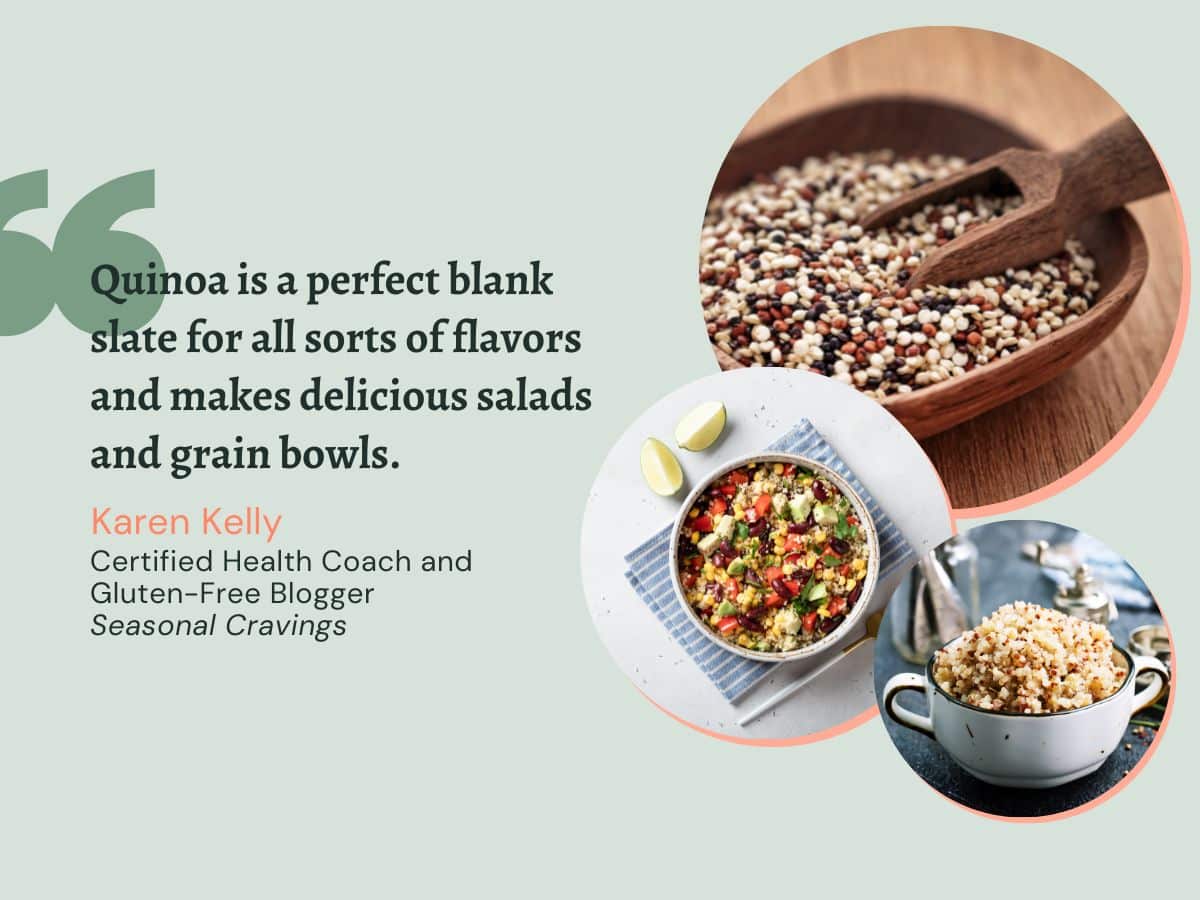
One cup of cooked quinoa contains 8.1 grams of protein. So when you make a bowl of porridge-like quinoa for breakfast, you add 140% more protein to your morning than when you eat oatmeal. And when you substitute a cup of cooked quinoa for white rice as a side dish at dinner, you add nearly double the protein to your evening.
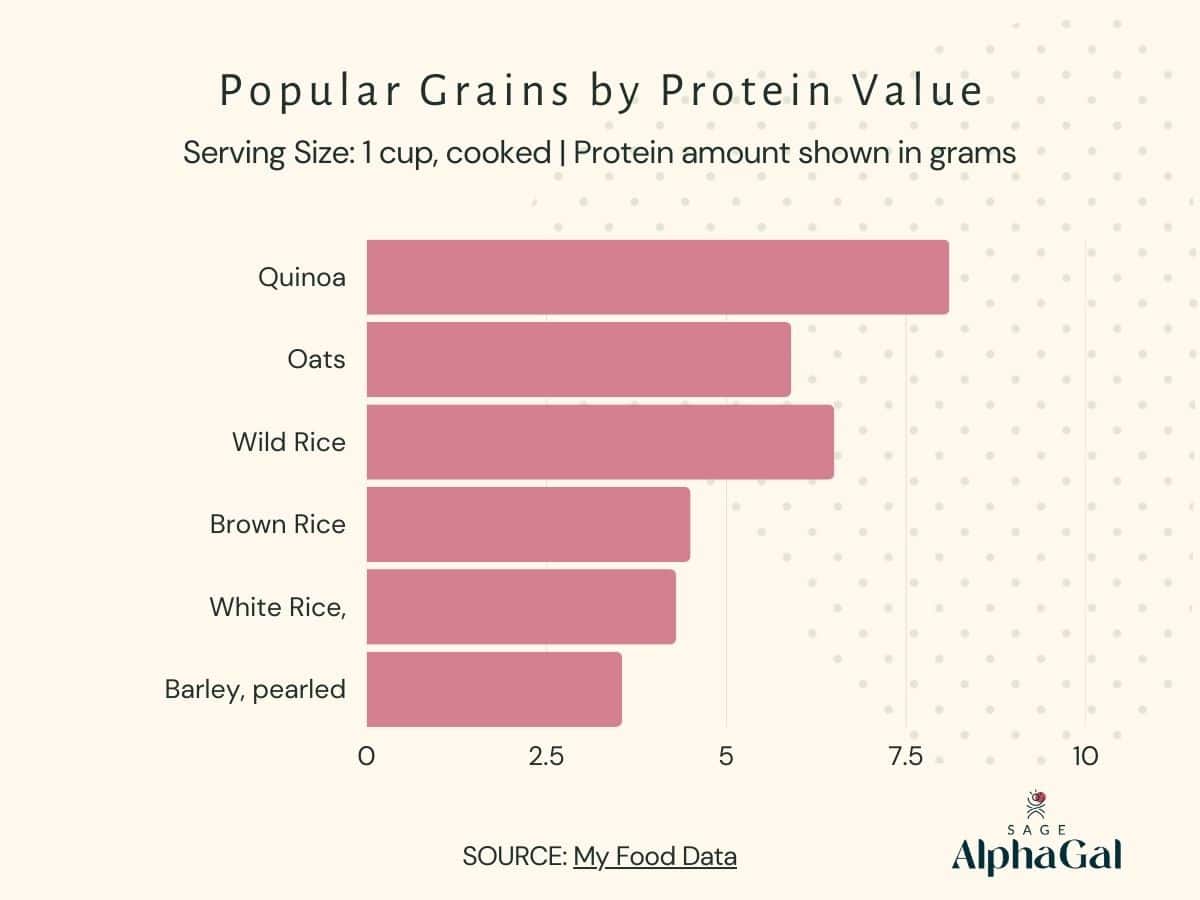
Is Quinoa Gluten Free?
Yes! This protein-rich ancient grain is a great option for people who follow a gluten-free diet. And if you have celiac disease, this article cites a study that found that some celiac patients experienced additional benefits from incorporating quinoa into their diet.
Is Quinoa a Carb?
With just over 39 grams of carbohydrates in one cup of cooked quinoa, it has about as many carbs as rice. However, because quinoa is a whole grain, it contains complex carbohydrates, which are better for you than refined grains (like white rice or white flour).
Is Quinoa Good for You?
Researchers from Harvard T.H. Chan School of Public Health found that people who ate 70 grams per day of whole grains (like quinoa) experienced health benefits. Specifically, they had a 22% lower risk of total mortality, a 23% lower risk of cardiovascular disease mortality, and a 20% lower risk of cancer mortality when compared with those who ate little to no whole grains. And because quinoa is high in both dietary fiber and protein, it helps increase your metabolism and feel full longer, which aids in weight loss.
Overall, quinoa is a nutritious food that can be a good addition to a healthy diet. But, as with any food, it is important to pay attention to portion sizes and eat a range of foods to ensure you get the right balance of nutrients.
Is Quinoa Healthier Than Rice?
It depends on the type of rice – do you want to compare quinoa with white rice, brown rice, or wild rice? And, what factors are you considering when determining the healthier option? Here’s how quinoa compares with all three types of rice, based on the calories, protein, carbohydrates, and dietary fiber in one cooked cup.
Wild rice is the only option that is tough enough to go head to head with quinoa. It beats quinoa in terms of calories (56 fewer per cup) and carbohydrates (4 grams less per cup). But quinoa is the gold medal winner when it comes to protein (about 25% more) and dietary fiber (2.2 grams more per cup).

What Does Quinoa Taste Like?
Quinoa has a subtle and unique flavor. While quinoa has a mild, slightly nutty flavor to me, some people describe its taste as slightly earthy or grassy, while others find it to be slightly sweet.
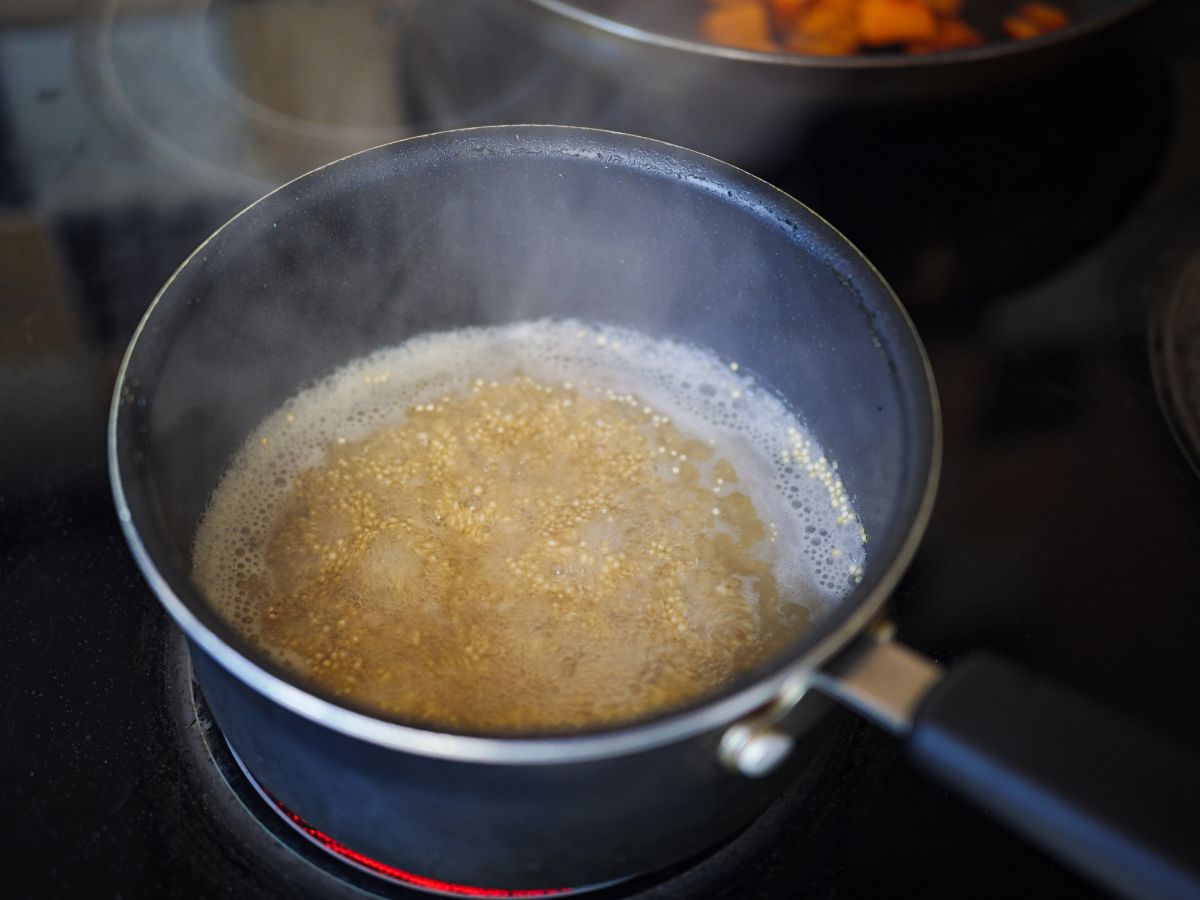
How to Cook Quinoa
Prepared quinoa has a fluffy, creamy texture. You can easily make the perfect batch of quinoa:
- in a rice cooker,
- on the stovetop,
- in a Crockpot or slow cooker, and
- in an Instant Pot or pressure cooker
Regardless of the tool you use, the general rule for fluffy quinoa is a 2:1 liquid-to-grain ratio. So for every cup of quinoa, use two cups of water, milk, or broth.
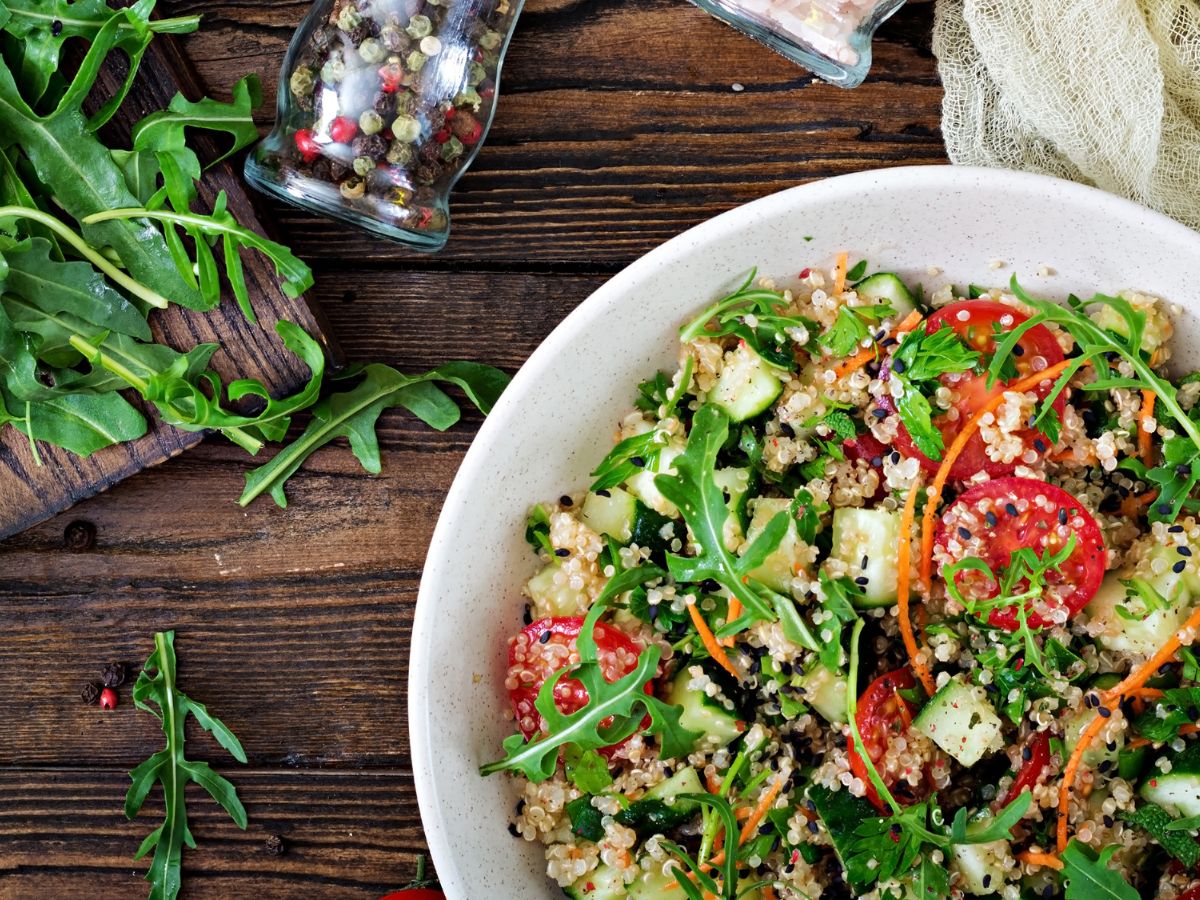
What to Eat with Quinoa
Quinoa is a flexible ingredient that can be enjoyed in many ways. Serve it as an alternative side dish to your favorite entree instead of rice pilaf. Stir it into soup, use it as a protein-rich base in a bowl of salad, or enjoy quinoa porridge with a drizzle of pure maple syrup in the morning.
Best Quinoa Recipes for Alpha Gals
Looking for creative ways to incorporate more quinoa into your diet? Here are a few tasty options:
Do You Like Quinoa?
What’s your favorite way to eat quinoa? Do you have a favorite quinoa recipe? Share your thoughts in the comments section below.
Thank you for sharing!

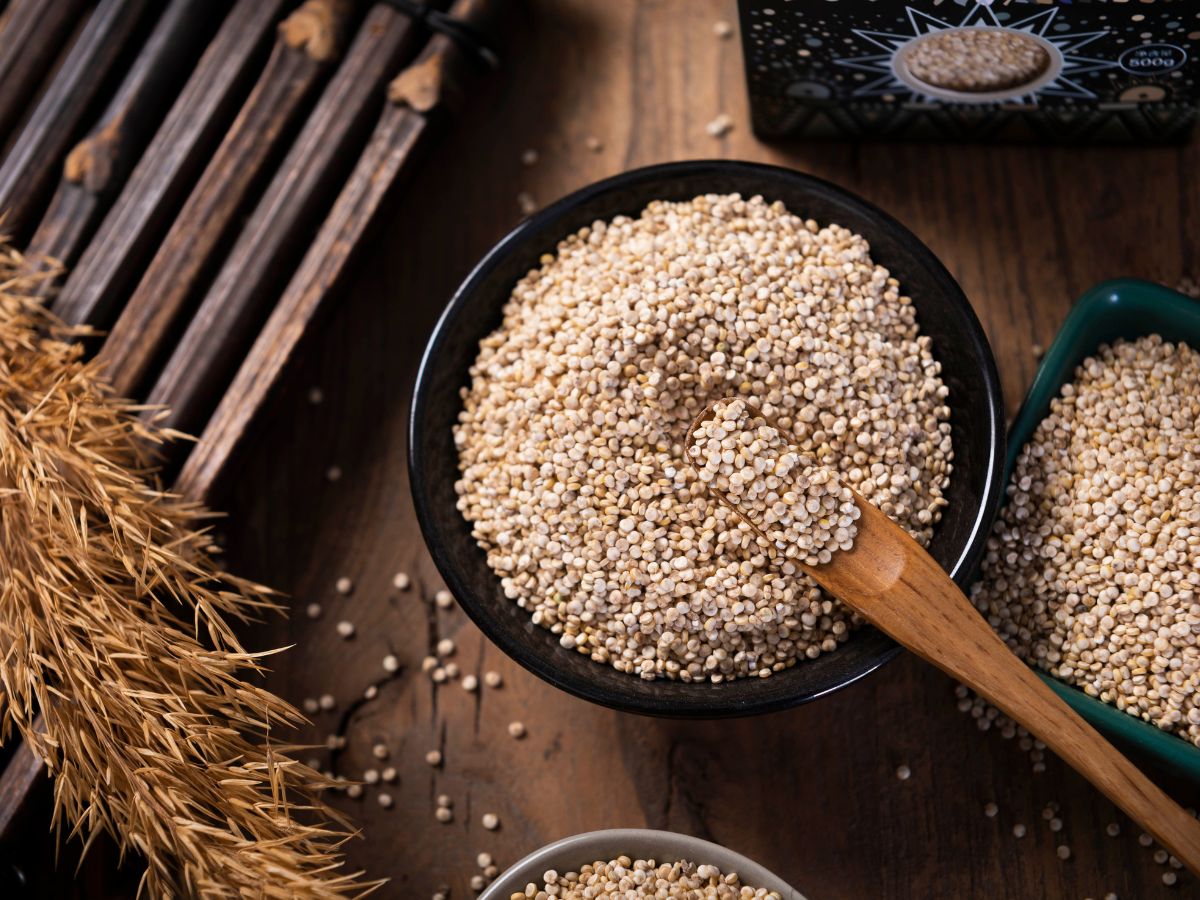
I just came upon this post of yours and it’s perfect because I am looking for new healthy breakfast ideas. I thought a Quinoa Oatmeal Breakfast would be perfect. I tried it and topped it with my preferred toppings such as strawberry, banana, apple, cashew, and chia seeds. The result turned out to be great! Healthy and yummy breakfast!
Thanks for this post! 🙂
It’s such a versatile grain and an awesome addition to oatmeal to pump up the protein. I’m glad you loved it!